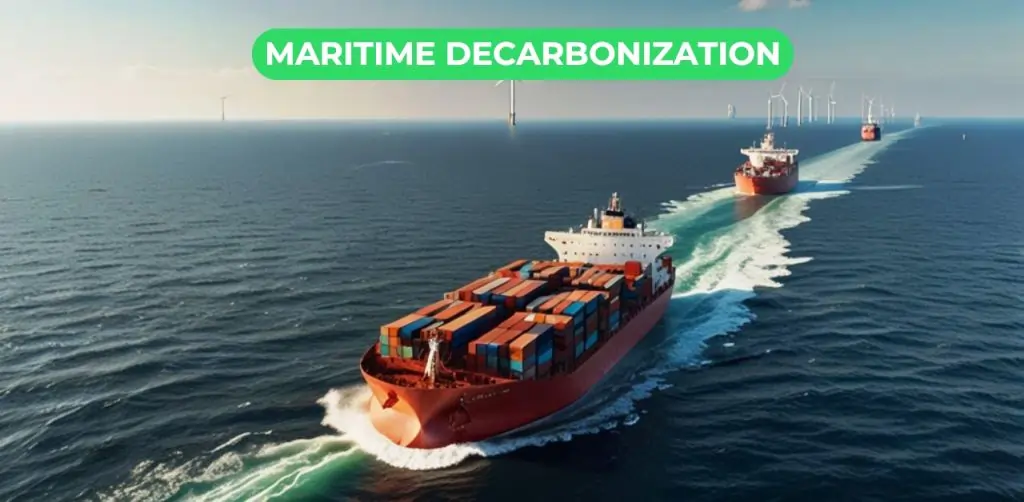What is Maritime Decarbonization
The maritime industry plays a vital role in global trade, but it also faces a major challenge: reducing its carbon footprint. With large engines and long journeys, ships are significant contributors to greenhouse gas emissions. However, the shift toward decarbonization in the maritime sector is gaining momentum. Driven by environmental concerns, stricter regulations, and the need for sustainable practices, this transition is becoming increasingly urgent.
In this post, we’ll highlight five key facts to help you understand the critical steps toward maritime decarbonization.
1. The Urgency: Why Decarbonization Matters
Shipping, while essential for global trade, is a significant contributor to greenhouse gas emissions, accounting for around 3% of global CO2 emissions. These emissions contribute to climate change, air pollution, and ocean acidification, impacting the environment and human health.
The urgency for decarbonization stems from the need to:
- Combat Climate Change: Reducing greenhouse gas emissions is crucial to mitigate the effects of climate change, such as rising sea levels, extreme weather events, and biodiversity loss.
- Improve Air Quality: Ship emissions contribute to air pollution, particularly in coastal areas and port cities, impacting respiratory health and overall well-being.
- Protect Marine Ecosystems: Ocean acidification, caused by increased carbon dioxide absorption in seawater, harms marine life and disrupts delicate ocean ecosystems.
Decarbonizing the maritime industry is not just an environmental imperative; it’s also crucial for the long-term sustainability and resilience of the industry itself.
2. The Goal: Setting a Course for Zero Emissions
The ultimate goal of maritime decarbonization is to achieve zero greenhouse gas emissions from ships. This ambitious target requires a fundamental shift in how ships are designed, built, and operated.
The International Maritime Organization (IMO) has set ambitious targets to reduce carbon intensity by at least 40% by 2030 and strive for a 70% reduction by 2050, compared to 2008 levels. These targets provide a clear direction for the industry and drive the development and implementation of decarbonization strategies.
3. The Strategies: Charting a Path to a Greener Future
Achieving maritime decarbonization requires a multi-faceted approach, encompassing technological advancements, operational changes, and regulatory measures. Key strategies include:
- Alternative Fuels: Transitioning to cleaner fuels with lower carbon footprints, such as:
- Liquefied Natural Gas (LNG)
- Methanol
- Hydrogen
- Ammonia
- Biofuels
- Energy Efficiency: Improving the energy efficiency of ships through:
- Hull design optimization
- Energy-efficient propulsion systems
- Waste heat recovery
- Speed optimization
- Operational Measures: Optimizing ship operations to reduce fuel consumption and emissions, including:
- Route optimization
- Slow steaming (reducing speed)
- Just-in-time arrival at ports
- Port Infrastructure: Developing shore-side power infrastructure to enable ships to plug into the electrical grid while in port, reducing emissions.
- Carbon Capture and Storage: Exploring technologies to capture and store carbon dioxide emissions from ships, although this technology is still in its early stages.
4. The Regulations: Setting the Framework for Change
Regulations play a crucial role in driving maritime decarbonization by setting standards, incentivizing innovation, and ensuring accountability. Key regulations include:
- IMO Regulations: The IMO is the primary regulatory body for the shipping industry, setting international standards for emissions reduction and energy efficiency. Key regulations include the Energy Efficiency Design Index (EEDI) for new ships and the Ship Energy Efficiency Management Plan (SEEMP) for all ships. 1 1. de.wikipedia.org de.wikipedia.org
- EU ETS: The European Union’s Emissions Trading System (EU ETS) for shipping includes maritime transport in its carbon pricing mechanism, putting a price on emissions and incentivizing emission reductions.
- National Regulations: Many countries are also implementing their own regulations and initiatives to promote decarbonization in the maritime sector.
5. The Challenges: Navigating the Transition
While the path to maritime decarbonization is clear, there are significant challenges to overcome:
- Technological Development: Developing and scaling up new technologies, such as alternative fuels and carbon capture systems, requires significant investment and research.
- Infrastructure: Building the necessary infrastructure, such as LNG bunkering facilities and shore power connections, requires significant investment and coordination.
- Cost: Transitioning to cleaner technologies and fuels can be expensive, potentially impacting the competitiveness of the shipping industry.
- International Collaboration: Achieving global decarbonization requires international collaboration and harmonization of regulations and standards.
